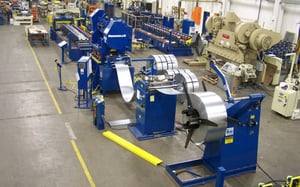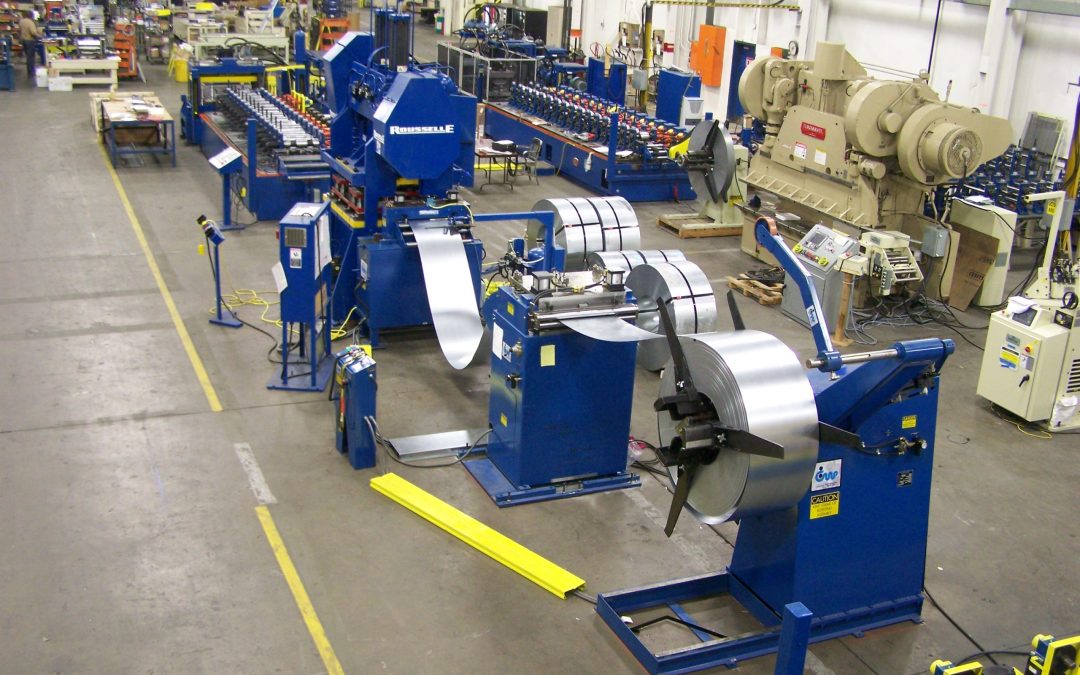 There are two main elastic distortion phenomena that both the shape and tool designer must be aware of when forming: "springback" and "end flare". Let's break them down one at a time, explaining what they are and how they can be prevented or corrected during fabrication.
There are two main elastic distortion phenomena that both the shape and tool designer must be aware of when forming: "springback" and "end flare". Let's break them down one at a time, explaining what they are and how they can be prevented or corrected during fabrication.
Springback is defined as the general distortion of a part after its removal from the forming pressure. The amount varies with metal properties like yield point and elastic modulus. Usually by over-forming, the designer can compensate for a given set of these conditions.
End flare is a closely related distortion which occurs, as its name implies, at the ends of a roll formed section or at any point along its length where one might cut though it, such as pierces or notches in the cross-section. The strains in roll forming are much more complex than in other types of bending. Residual stresses make themselves particularly apparent by a greater distortion at the ends of a part than at any point along its length. Flare can be minimized by roll design procedures, but it cannot be completely eliminated except by subjecting the metal to some amount of stretch forming or to a stress relieving anneal.



